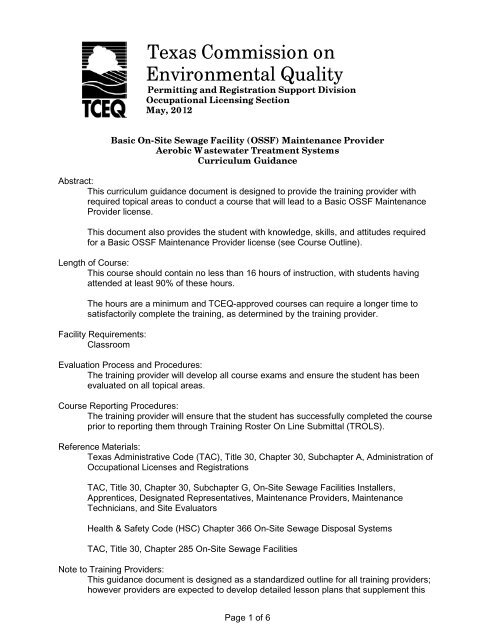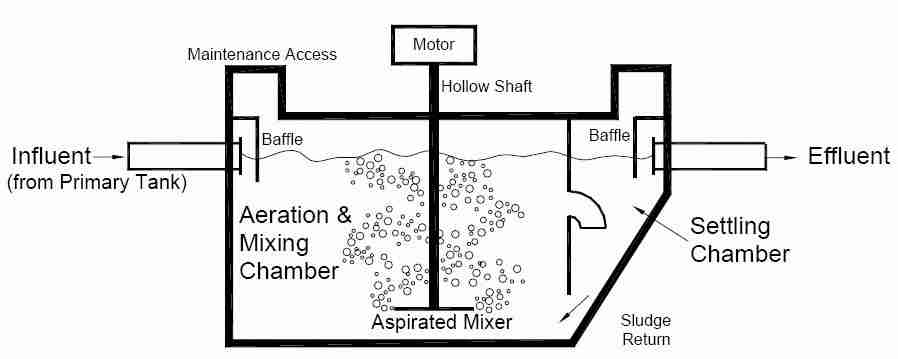In this article, we will be discussing the importance of essential maintenance for keeping your onsite system healthy and functioning properly. You will learn why regular maintenance is crucial, the top maintenance tasks to prioritize, and how to effectively carry them out. By the end, you will have a better understanding of how to ensure the longevity and efficiency of your onsite system.

Why Essential Maintenance is Important
Essential maintenance is a crucial aspect of ensuring the proper functioning and longevity of an onsite system. By performing regular inspections, maintaining drainage efficiency, practicing safe chemical usage, and implementing water conservation measures, you can prevent costly repairs and replacements while preserving the environment for future generations.
Ensures Proper Functioning of the System
Regular maintenance plays a vital role in ensuring the proper functioning of your onsite system. By conducting inspections, you can identify and address potential issues before they escalate into major problems. This proactive approach allows you to avoid system malfunctions, such as backups and leaks, which can be both inconvenient and hazardous to your health.
Prevents Costly Repairs and Replacements
Neglecting maintenance can result in costly repairs and even the need to replace your entire onsite system. By investing time and effort in routine inspections and upkeep, you can detect and resolve minor issues promptly. This preventative approach can save you from the financial burden of major repairs or the need for a complete system overhaul.
Improves Longevity of the Onsite System
Regular maintenance significantly improves the longevity of your onsite system. By addressing potential issues early on and taking proactive measures to preserve the system’s functionality, you can extend its lifespan. This not only saves you money in the long run but also reduces the impact on the environment by minimizing the need for new system installations.
Regular Inspections
Regular inspections of your onsite system are essential for identifying potential issues and ensuring its proper functioning. These inspections should occur at least once a year, but in some cases, more frequent inspections may be necessary.
Inspection Frequency
The frequency of inspections depends on various factors, such as the size of your household, the system’s age, and the local regulations. A general rule of thumb is to conduct inspections annually. However, if you have a larger household or an older system, more frequent inspections, such as every six months, may be required.
Components to Inspect
During inspections, it is crucial to examine different components of your onsite system. These include the septic tank, the drainfield, the distribution box, and the pipes connecting them. By inspecting each component, you can identify signs of damage, blockages, or inefficient functioning.
Identifying Potential Issues
During inspections, it is crucial to look out for potential issues that may require repairs or further investigation. Signs of problems include foul odors near the septic tank or drainfield, slow draining or gurgling pipes, and unusually lush or damp areas around the drainfield. If you notice any of these signs, it is essential to take immediate action to prevent further damage or system failure.
Proper Pumping Schedule
Regular pumping is an integral part of maintaining a healthy onsite system. It helps prevent buildup of solids in the septic tank, ensuring its proper functioning and avoiding potential issues.
Determining Pumping Frequency
The pumping frequency of your septic tank depends on several factors, including the size of the tank and the number of people living in your household. As a general guideline, septic tanks should be pumped every three to five years. However, if you have a smaller tank or a larger household, more frequent pumping may be necessary.
Pumping Techniques and Equipment
When pumping your septic tank, it is crucial to ensure that the process is done correctly. Hiring a professional septic service company with experience in onsite systems is highly recommended. They will have the appropriate equipment and knowledge to perform the pumping efficiently and safely.
Proper Waste Disposal
Proper waste disposal is an essential aspect of maintaining a healthy onsite system. Only flush human waste and toilet paper down the toilet. Avoid flushing items such as non-biodegradable materials, feminine hygiene products, diapers, or excessive amounts of household chemicals. These items can clog pipes and cause damage to the septic tank.
Maintaining Drainfield Efficiency
Maintaining the efficiency of your drainfield is crucial for the proper functioning of your onsite system. A well-maintained drainfield allows for efficient wastewater treatment and prevents soil clogging.
Preventing Soil Clogging
Soil clogging can occur when the drainfield becomes saturated with wastewater or when solid waste particles infiltrate the soil. To prevent soil clogging, it is essential to avoid excessive water usage. Be mindful of how much water your household is using and implement water conservation measures to keep the drainfield from becoming overloaded.
Avoiding Excessive Water Usage
Conserving water is not only beneficial for the environment but also for maintaining the health of your onsite system. Avoid excessive water usage by fixing leaks promptly, using water-saving devices such as low-flow toilets and showerheads, and spreading out water-intensive activities throughout the day.
Promoting Plant Growth around the Drainfield
Promoting plant growth around the drainfield can help absorb excess moisture and aid in the treatment of wastewater. Planting grass or shallow-rooted shrubs in the area can enhance the drainfield’s performance. However, it is essential to avoid planting deep-rooted trees or shrubs, as their roots can infiltrate the drainfield and cause damage.
Safe Chemical Usage
Using chemicals that are safe for your onsite system and the environment is crucial for its proper functioning and longevity. Choosing environmentally friendly products, avoiding harsh chemicals, and properly disposing of chemicals are all vital aspects of safe chemical usage.
Choosing Environmentally Friendly Products
When purchasing household cleaners, laundry detergents, or any other chemical products that may end up in your onsite system, choose environmentally friendly options. Look for labels that indicate biodegradability and avoid products that contain harsh chemicals or antibacterial agents that can disrupt the natural bacterial balance in your septic tank.
Avoiding Harsh Chemicals
Harsh chemicals, such as bleach, drain cleaners, or excessive amounts of antibacterial soap, can disrupt the natural bacteria in your septic tank. These bacteria are essential for breaking down solid waste and maintaining the proper functioning of the system. Avoid using these products excessively or altogether to preserve the bacterial balance in your onsite system.
Proper Disposal of Chemicals
When it comes to disposing of chemicals, it is crucial to follow local regulations. Never dispose of chemicals down the drain or toilet, as they can end up in the septic tank and harm the system. Contact your local waste management facility to inquire about proper disposal methods for different types of chemicals.
Regular Septic Tank Cleaning
Regular cleaning of your septic tank is necessary to remove accumulated solids and maintain its proper functioning. The frequency of tank cleaning depends on several factors, including the size of the tank and the number of people living in your household.
Frequency of Tank Cleaning
As a general guideline, septic tanks should be cleaned every three to five years. However, if you notice signs of system overload, such as slow draining or foul odors, a more frequent cleaning may be necessary. Consulting a professional septic service company can help determine the optimal cleaning frequency for your specific situation.
Methods for Cleaning
Cleaning a septic tank should always be done by a professional septic service company that specializes in onsite systems. They will use appropriate methods such as vacuum trucks to remove accumulated solids and ensure thorough cleaning of the tank. Trying to clean the tank yourself can be dangerous and may result in damage to the system.
Dealing with Saturated Tanks
If your septic tank becomes saturated due to excessive water usage or a malfunctioning drainfield, it is essential to address the issue promptly. Reduce your water usage, fix any leaks, and consult a professional septic service company to assess the situation. They will determine the best course of action to resolve the problem and prevent further damage to your onsite system.

Preventing Drainage System Issues
Preventing drainage system issues is crucial for maintaining the proper functioning of your onsite system. By following a few simple practices, you can avoid common problems such as tree root intrusions and solid waste buildup.
Avoiding Tree Root Intrusions
Tree roots can infiltrate your drainage system and cause blockages and damage. To prevent tree root intrusions, avoid planting trees or shrubs with deep root systems near your onsite system. If you have existing trees in the vicinity, regularly inspect and trim their roots to prevent them from entering the pipes.
Proper Waste Disposal Practices
Proper waste disposal practices are essential for preventing solid waste buildup in your onsite system. Avoid flushing non-biodegradable items down the toilet, such as wipes, sanitary products, or excessive amounts of food waste. Dispose of solid waste properly in the trash to prevent clogs and damage to your septic system.
Preventing Solid Waste Buildup
To prevent solid waste buildup in your septic tank, it is crucial to take a few preventive measures. Avoid excessive water usage, follow a regular pumping schedule, and practice proper waste disposal. These simple habits can go a long way in preventing the accumulation of solid waste and ensuring the proper functioning of your onsite system.
Effective Water Conservation
Conserving water is not only beneficial for the environment but also crucial for maintaining a healthy onsite system. By monitoring your water usage, implementing water-saving devices, and practicing water conservation in your daily activities, you can contribute to the preservation of your onsite system’s functionality.
Monitoring Water Usage
Monitoring your water usage is an essential step in effective water conservation. Be conscious of how much water your household consumes and identify areas where water usage can be reduced. Fix leaks promptly, avoid leaving taps running unnecessarily, and spread out water-intensive activities such as laundry or dishwashing throughout the day.
Implementing Water-Saving Devices
Installing water-saving devices can significantly reduce your household’s water consumption. Consider installing low-flow toilets, showerheads, and faucets. These devices use less water without compromising functionality, allowing you to conserve water and reduce the strain on your onsite system.
Conserving Water in Daily Activities
In addition to implementing water-saving devices, practicing water conservation in your daily activities is essential. Take shorter showers, turn off the tap when brushing your teeth or doing dishes, and consider collecting rainwater for outdoor use. These small changes can add up to significant water savings over time.

Educating Residents
Educating residents about the importance of maintenance and proper care of the onsite system is crucial for its longevity and the preservation of the environment. By informing them about system capacity limits, providing do’s and don’ts, and raising awareness about the environmental impact, you can foster a culture of responsible onsite system management.
Informing about System Capacity Limits
Understanding the capacity limits of your onsite system is crucial for its proper functioning. Educate residents about the maximum amount of wastewater the system can handle and the consequences of exceeding this limit. This knowledge empowers residents to make informed decisions about their water usage and take steps to prevent system overload.
Providing Do’s and Don’ts
Clearly defining the do’s and don’ts of onsite system care is essential for preventing potential issues. Educate residents about proper waste disposal practices, the importance of regular maintenance, and the harmful effects of certain chemicals on the system. By providing this information, you can help residents avoid actions that could cause damage or require extensive repairs.
Raising Awareness on Environmental Impact
Raising awareness about the environmental impact of onsite systems is crucial for fostering a sense of responsibility toward proper maintenance. Emphasize the importance of onsite system care in preserving the health of the surrounding environment, including groundwater sources and nearby ecosystems. This awareness can motivate residents to take active steps in maintaining their system’s health and contributing to a sustainable future.
Conclusion
Regular maintenance is essential for the proper functioning and longevity of an onsite system. By conducting regular inspections, following a proper pumping schedule, maintaining drainfield efficiency, practicing safe chemical usage, regularly cleaning the septic tank, preventing drainage system issues, conserving water, and educating residents, you can ensure the health of your onsite system and preserve the environment for future generations. By taking a proactive approach to maintenance, you can avoid costly repairs, prevent system failures, and contribute to a sustainable future. So, don’t neglect the essential maintenance tasks and prioritize the health of your onsite system.

